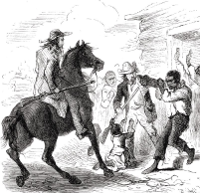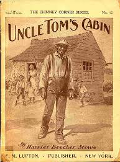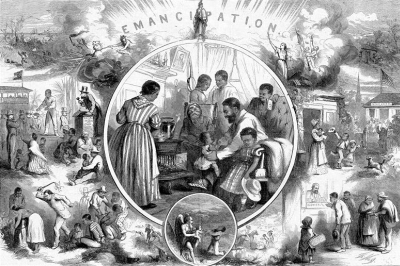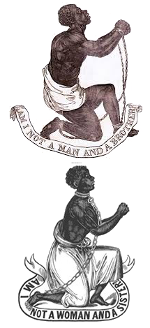Slavery in America
The idea of emancipating slaves began in the late 1770s and gathered steam throughout the next several decades. Beginning with the addition of the Northwest Territory in 1787, Northern territories and states joined the Union with the idea of not allowing slavery within their territory or state borders; on the other hand, new Southern states allowed slavery. As settlement of the continent spread westward, populations grew, and more and more states petitioned to join the Union, Congress became obsessed between maintaining some semblance of balance between North and South in terms of representation. The Southern states did not all band together on every issue, but they did, more often than not, do so when the issue came to whether to allow slavery, either in existing states or in new ones. The same was true in the North–at least in terms of not all states being in lock step all of the time; however, the issue of whether to allow slavery in new territories was one that generally united Northern interests behind stemming the spread of slavery. Congress passed a series of compromise laws intended to stave off what many feared would be a violent resolution to the conflict over slavery. The first major such law was the Missouri Compromise in 1820. During debate on that bill, Congress debated a proposal to keep slavery out of Missouri;. Congress voted down the amendment, and Missouri entered the Union as a "slave state." Also as part of the Missouri Compromise, Maine entered the Union as a "free state," prohibiting slavery. 
Another well-known compromise bill, the Compromise of 1850 was thought to have something for everyone but only seemed to inflame the situation further for many people. One of the five parts of that compromise was a more stringent Fugitive Slave Law, one that introduced punishments for people known to have broken the law and a federal patrol whose function was to enforce the law. (This, in effect, made the original statue, which devolved responsibility to the states, into a federal one, with the financial and military power of the national government behind it.) This tougher statute proved even more of a motivation for abolitionists to oppose slavery. Many people who spoke out against slavery cited religious and philosophical texts and teachings to support their assertions that slavery was indecent, immoral, and against the spirit of the idea of "all men are created equal" that was at the heart of the Declaration of Independence. On the other side of the issue were many people who used the same sort of texts and teachings to support the idea that slavery was allowable and necessary. (The Christian Bible was a convenient source for people on both sides of the slavery divide.) Another argument that Southerners made, whether they owned slaves or not (and not all of them did), was that slaves were necessary to drive the economy of the South. The large cotton plantations and tobacco fields and sugar and indigo production operations needed large amounts of labor to run, and the backbreaking work required for such tasks was more easily filled by slaves, so the argument went, than by non-slaves. 
Not helping the abolitionist argument was the Constitution, which included a handful of words that sanctioned the slave trade and stipulated that slaves were worth less than a person. Article 4, Section 2, Clause 3 states: "No Person held to Service or Labour in one State, under the Laws thereof, escaping into another, shall, in Consequence of any Law or Regulation therein, be discharged from such Service or Labour, But shall be delivered up on Claim of the Party to whom such Service or Labour may be due." This came to be known as the Fugitive Slave Clause. As well, Article 1, Section 2, Clause 3 of the U.S. Constitution begins this way: "Representatives and direct Taxes shall be apportioned among the several States which may be included within this Union, according to their respective Numbers, which shall be determined by adding to the whole Number of free Persons, including those bound to Service for a Term of Years, and excluding Indians not taxed, three fifths of all other Persons." In effect, a slave was counted as three-fifths of a person. This is how the proposal came to be known as the Three-Fifths Compromise. Abolitionist sentiments were most often heard in the North, but some were heard in the South as well. Most of the well-known abolitionists were in the North. Frederick Douglass, a former slave, was very famous, touring the North on speaking tours and joining prominent abolition groups like the American Anti-Slavery Society, founded by another famous abolitionist, the newspaper publisher William Lloyd Garrison. Joining in the abolitionist movement were many prominent women, including Angela Grimké, Sarah Grimké, and Lucretia Mott, later one of the leaders of the women's suffrage movement. Later joining Mott in the drive for abolition were fellow suffrage movement leaders Susan B. Anthony and Lucy Stone. Other famous female abolitionists included Sojourner Truth and Harriet Tubman, the famed Underground Railroad "conductor." 
One of the most influential publications in the history of the abolition movement was Uncle Tom's Cabin, a novel by Harriet Beecher Stowe that described in often horrendous scenarios the life that African-American slaves endured in the South. The book first appeared in 1852 and was very widely read across the country. Stowe later said that she wrote the book in part as a reaction to the strengthened Fugitive Slave Law. Other well-known abolitionists included Henry Ward Beecher, brother to Harriet Beecher Stowe. Beecher sent guns to aid the anti-slavery in Kansas, saying that one gun was worth a hundred Bibles. The guns came to be known as "Beecher's Bibles." One of the most famous acts of insurrection in the abolition movement was the seizing of the federal arsenal at Harpers Ferry by John Brown. This 1859 series of events, which ended with Brown's capture and eventual execution, also helped galvanize sentiment against the horrors of slavery. The addition of new states California and Kansas, in 1850 and 1861, respectively, tipped the balance on the side of the "free states," where it was to stay. The addition of Kansas, the 34th state, made the number of "free states" 19 and the number of "slave states" 15. By the time that Kansas became a state, a new President had already been elected. 
In November 1860, Abraham Lincoln was elected President. Following through on a threat, the Southern states seceded from the Union. Among the reasons that they gave was that they feared that Congress would take away their right to have slaves. They fears were eventually realized, but only after four long, bloody years of Civil War. Lincoln issued the Emancipation Proclamation in 1863, freeing slaves held in the Southern states, and this convinced border states like Delaware and Maryland to begin their own emancipation efforts. In the end, it took an amendment to the Constitution to abolish slavery in America. First page > Trading in Human Lives > Page 1, 2, 3 |
|
Social Studies for Kids
copyright 2002–2025
David White





